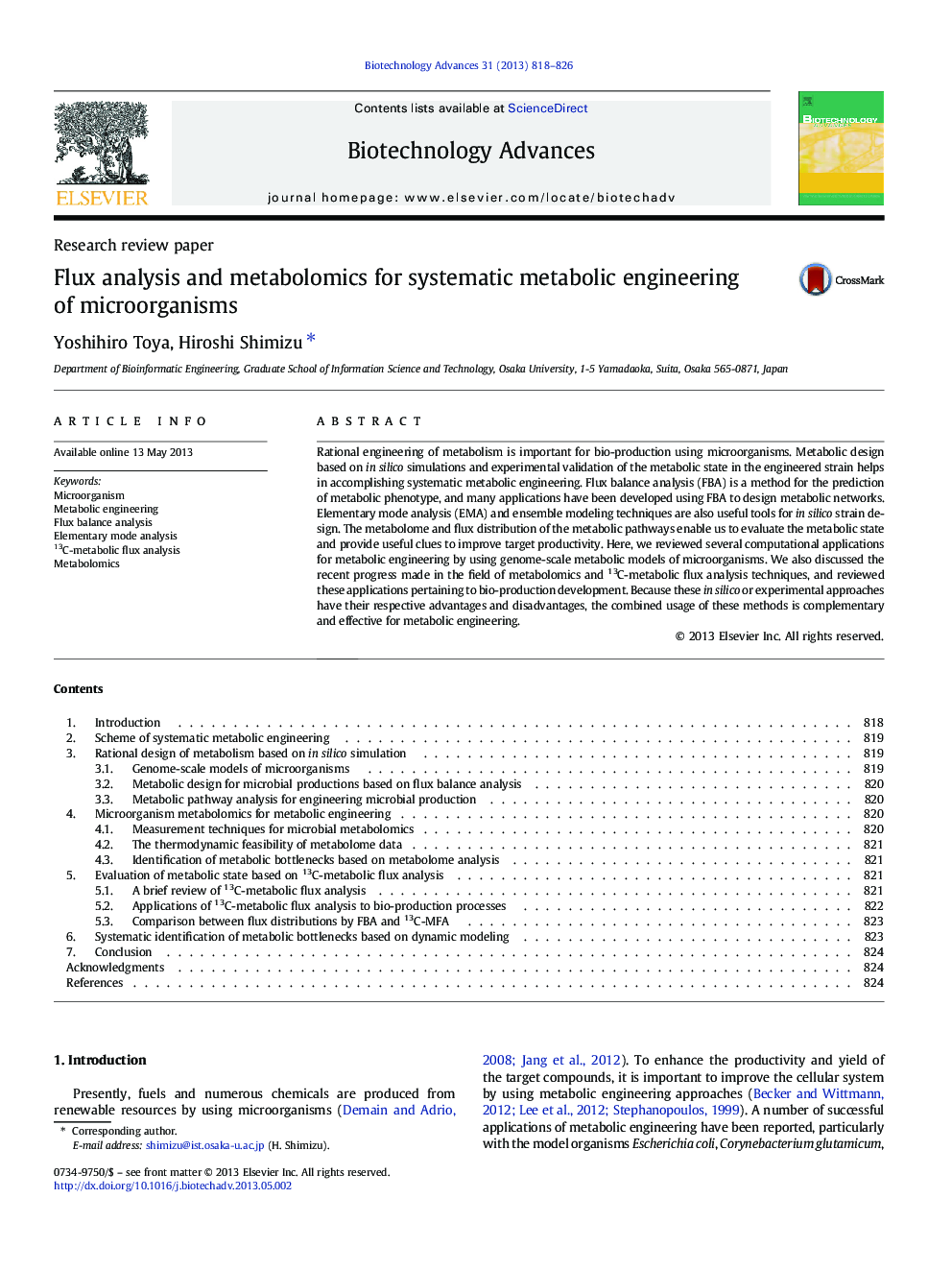| Article ID | Journal | Published Year | Pages | File Type |
|---|---|---|---|---|
| 14345 | Biotechnology Advances | 2013 | 9 Pages |
Rational engineering of metabolism is important for bio-production using microorganisms. Metabolic design based on in silico simulations and experimental validation of the metabolic state in the engineered strain helps in accomplishing systematic metabolic engineering. Flux balance analysis (FBA) is a method for the prediction of metabolic phenotype, and many applications have been developed using FBA to design metabolic networks. Elementary mode analysis (EMA) and ensemble modeling techniques are also useful tools for in silico strain design. The metabolome and flux distribution of the metabolic pathways enable us to evaluate the metabolic state and provide useful clues to improve target productivity. Here, we reviewed several computational applications for metabolic engineering by using genome-scale metabolic models of microorganisms. We also discussed the recent progress made in the field of metabolomics and 13C-metabolic flux analysis techniques, and reviewed these applications pertaining to bio-production development. Because these in silico or experimental approaches have their respective advantages and disadvantages, the combined usage of these methods is complementary and effective for metabolic engineering.
